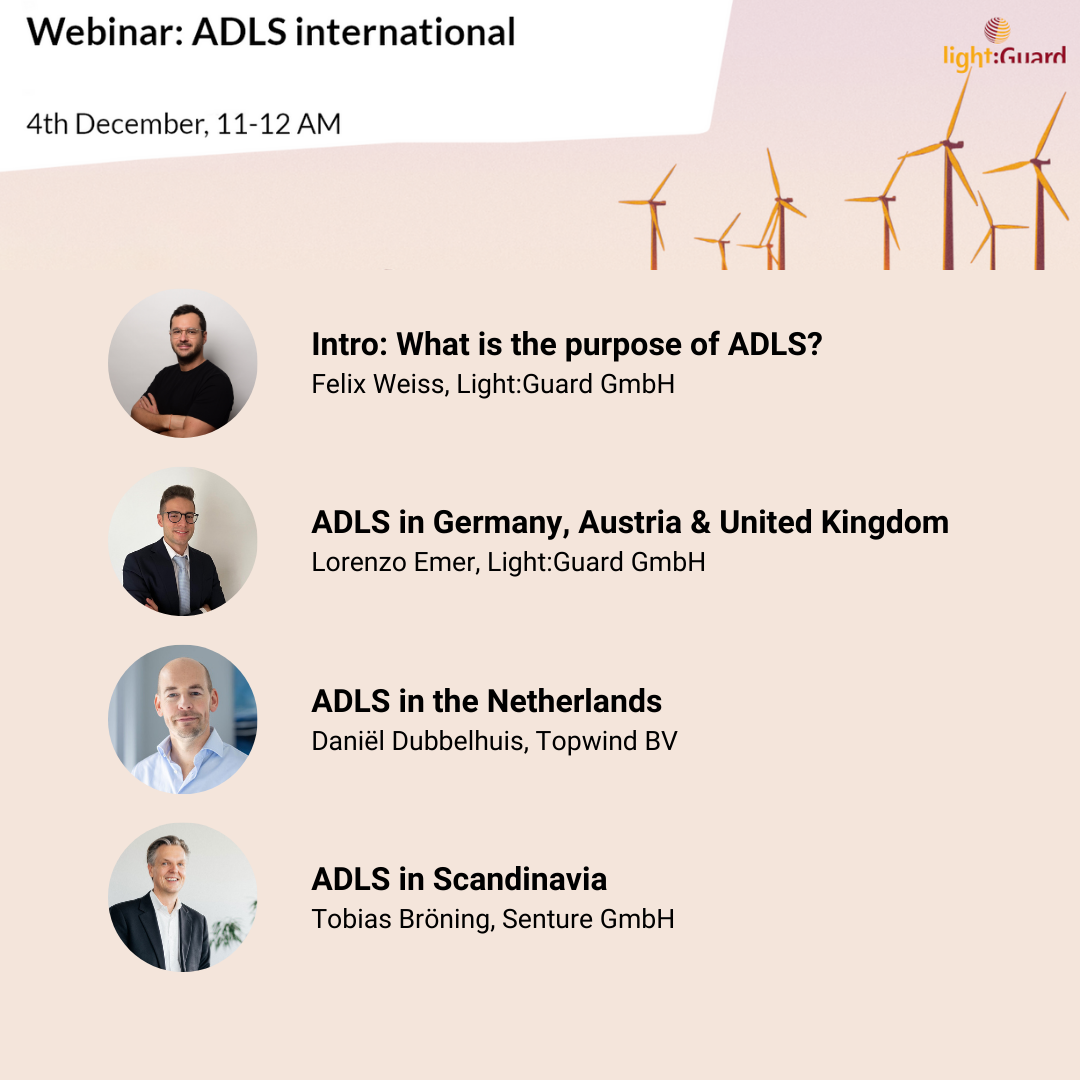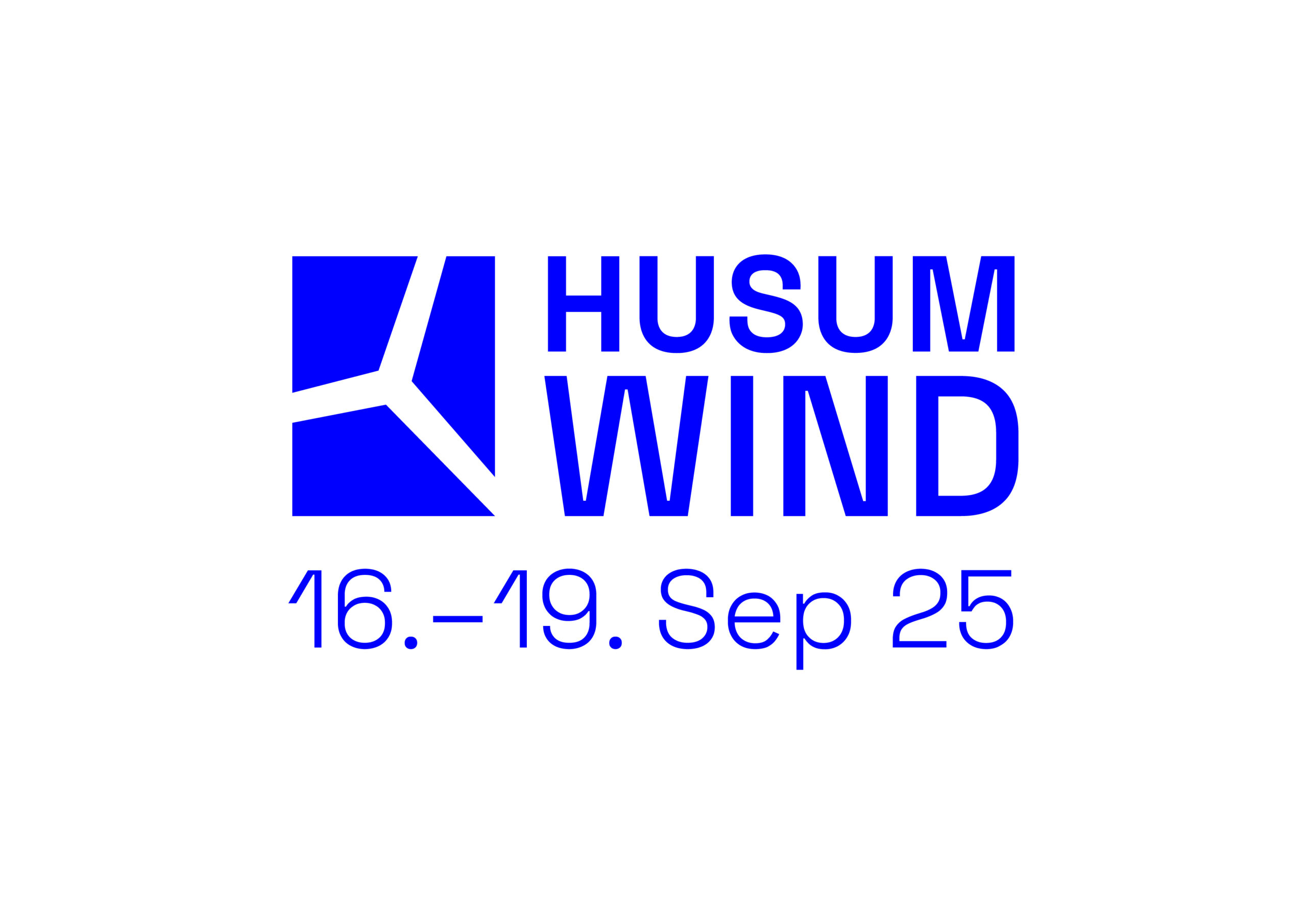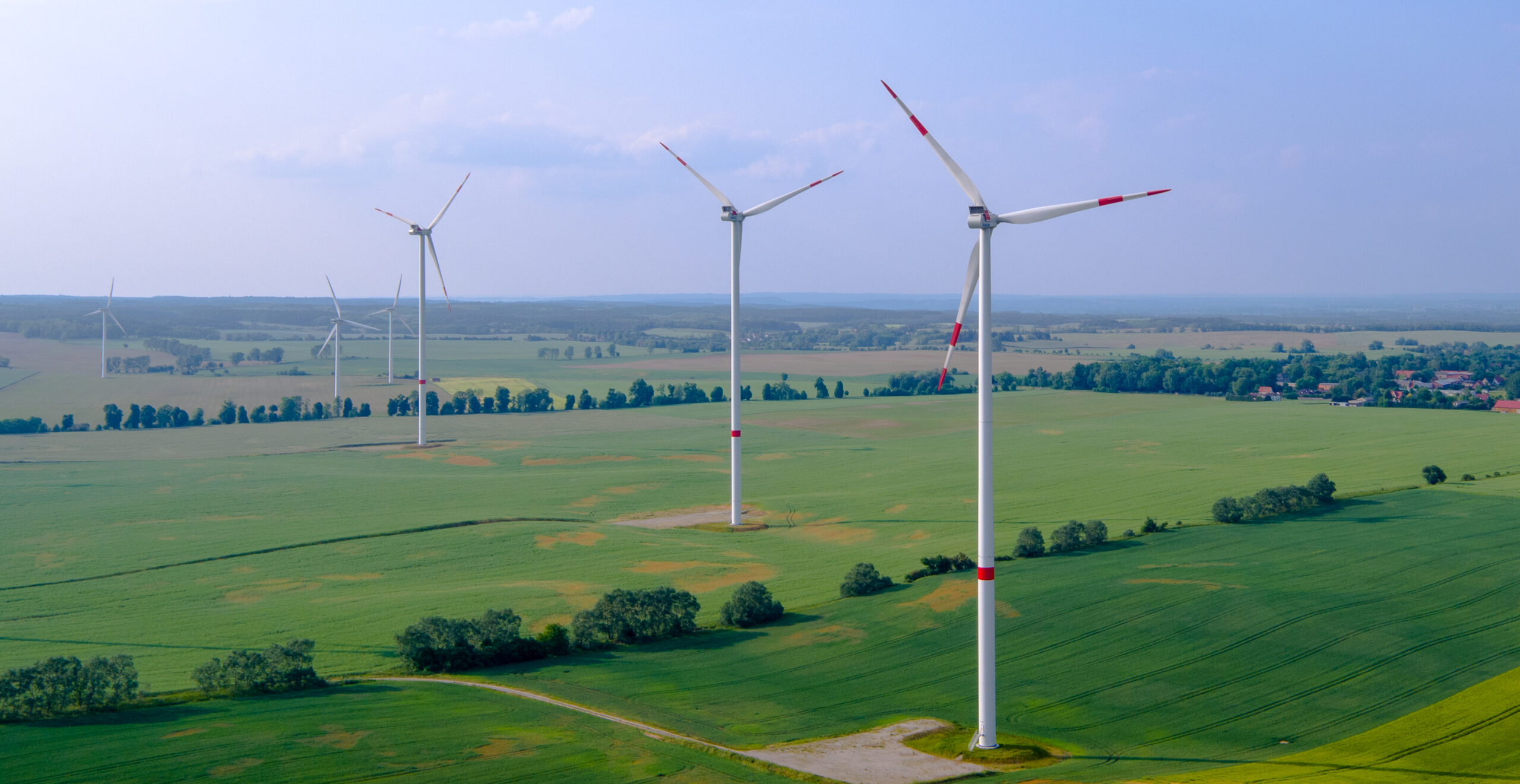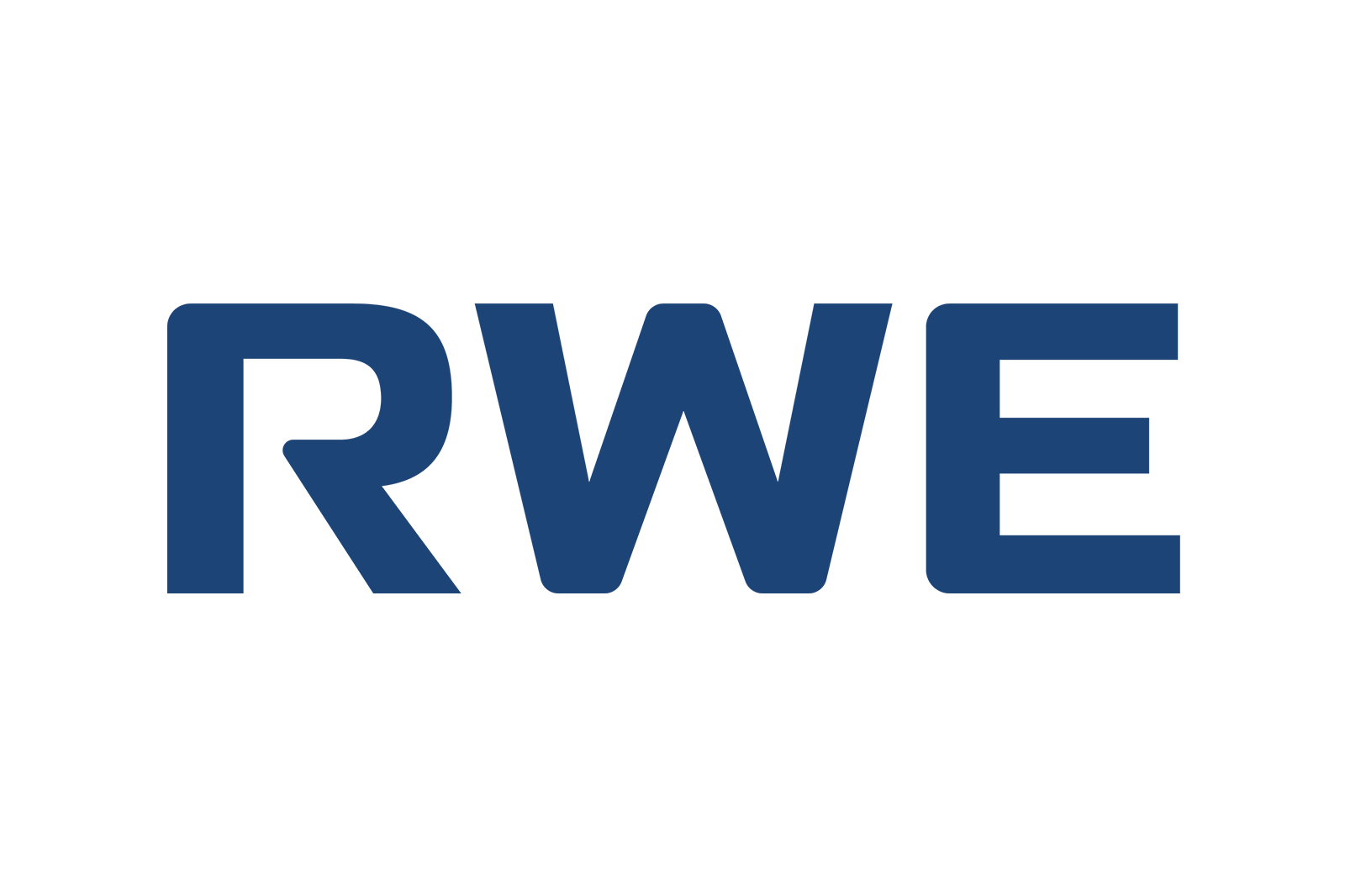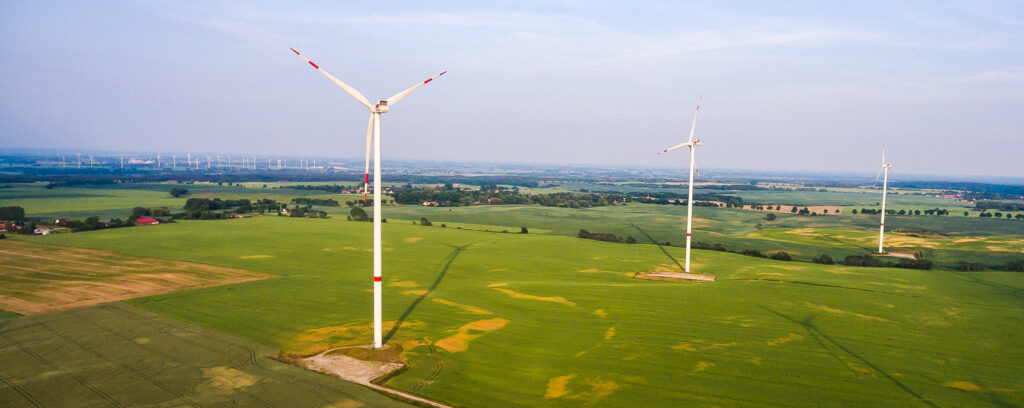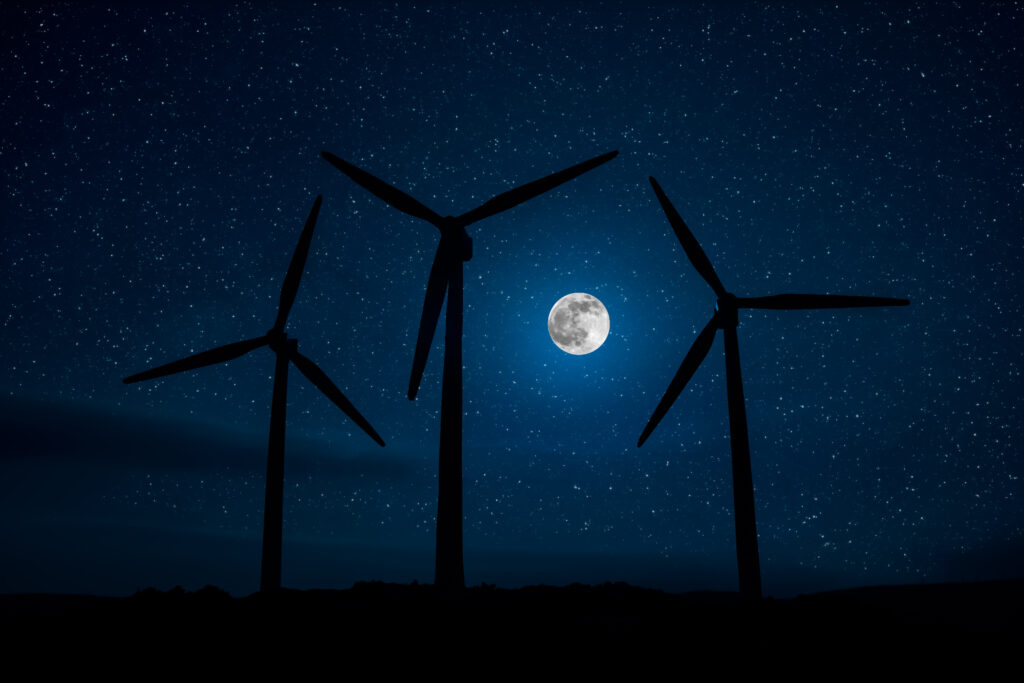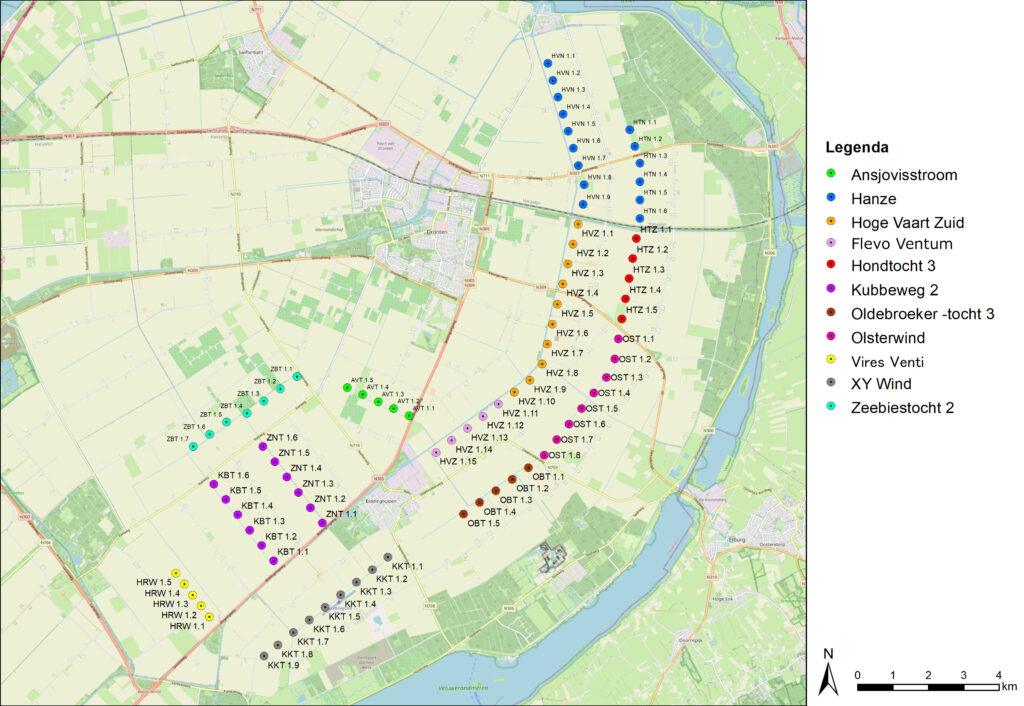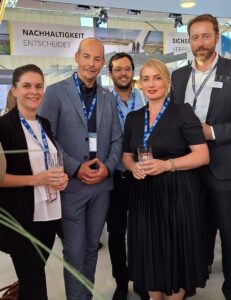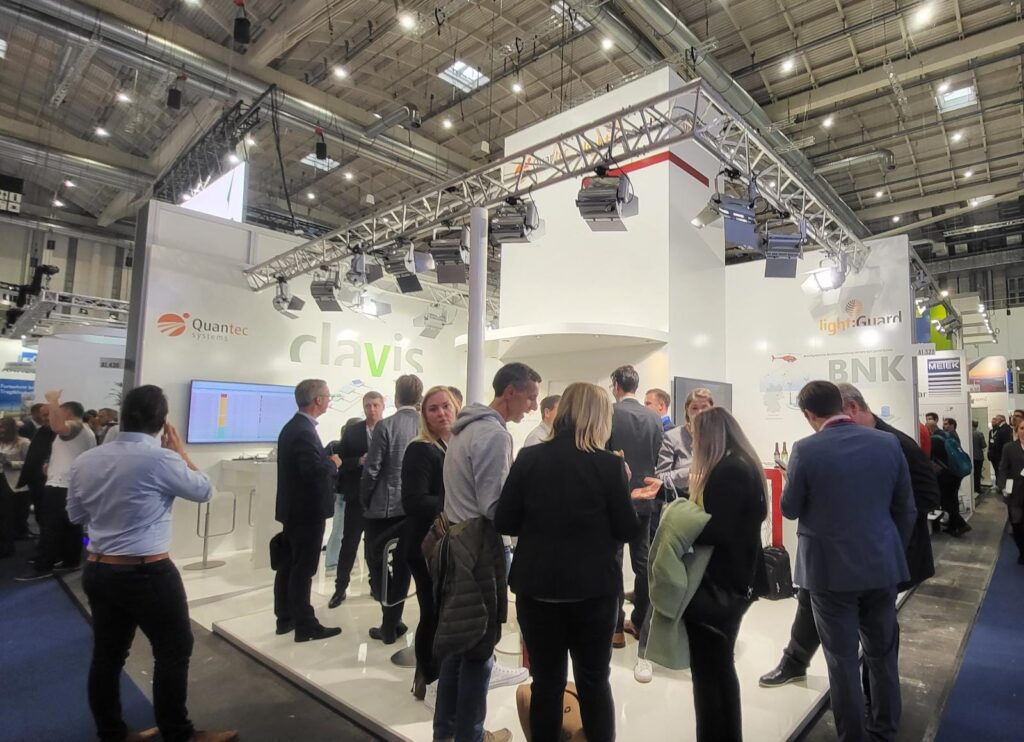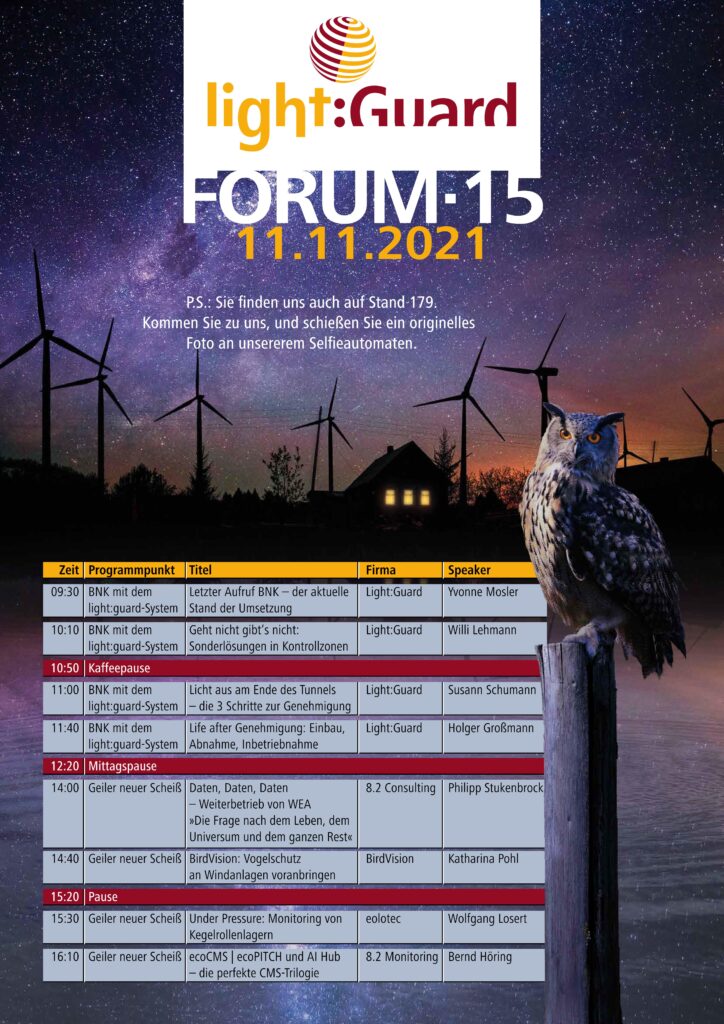30th October 2023
Light:Guard is the exclusive partner of Vestas in the field of Aircraft Detection Lighting System (ADLS). Both for existing turbines and, more recently, for new turbines, the light:guard system can be obtained directly from Vestas.
In order to be able to answer park operators’ questions in more detail about the current status of ADLS equipment, Vestas and light:guard recently held an online seminar. In addition to the welcome news that the retrofit for ADLS-ready is almost complete and that the 80% of all light:guard systems sold by Vestas and us have been installed, there were also updates on dark-switched parks and news on further acceptances.
The most important questions and answers are summarized here:
Question: is the ADLS deadline extension legally binding yet?
Answer: The deadline extension was left uncommented by the Bundesrat in the consultation process and is now being discussed in the Bundestag. You can find everything else about the deadline extension in our statement under this FAQ.
Question: What is the timetable for installing the hardware?
Answer: All systems should be installed by the end of 2023 at the latest. A wind farm specific date can be requested via [email protected].
Question: Are there already wind farms with an active ADLS system?
Answer: Yes, we already have various single sites and also already parks with multilateration from cluster 1 active. In addition, we have already darkened over 500 turbines with radar ADLS systems from our sister company Quantec Sensors. Since we were also responsible for retrofitting the ADLS infrastructure at various manufacturers in addition to the ADLS systems, our activation generally takes place in three steps: 1. retrofitting/verification of the parks’ infrastructure, 2. installation of a ADLS system, 3. aerial survey and acceptance. The first step has already been completed, the second step will be in the near future, and after that, the dark switching of all parks will follow with a big swing as the third step.
Question: Do you have more detailed information on the layout of the clusters in Rhineland-Palatinate?
Answer: Our experience with cluster 1 is that the acceptance process works better and faster when the clusters are smaller, which is why we have divided cluster 2 into three parts.
Question: When will the site-specific tests for my region take place and when can we expect the certificates?
Answer: The exact schedule is subject to postponements and changes, but the following rough forecast can already be made: By the end of the year, it is planned to fly about 30% of all remaining wind farms and the final certificate can be issued for 15% of all wind farms. This concerns mainly cluster 1 (Hamburg), cluster 2 (Saarland/Rhineland-Palatinate) and Central Germany (Saxony, Brandenburg, Saxony-Anhalt, Lower Saxony, North Rhine-Westphalia). Southern Germany (Bavaria, Baden-Württemberg) will be flown in the first quarter of 2024 and subsequently certified. Northern Germany (Brandenburg, northern Saxony-Anhalt, Lower Saxony, northern NRW, Mecklenburg-Western Pomerania and rest of Schleswig-Holstein) will be surveyed and finally certified in the first quarter of 2024 with a separate team by then.
Question: Why does the site survey take much longer than for other ADLS providers?
Answer: The site survey differs depending on the design of the ADLS system. There are three approaches: one ADLS system (receiver) per WTG, one ADLS system (receiver) per park (island solution) or one ADLS system (receiver) per park, which also receives the information from all other receivers. The quality of the signal is highest in the third solution approach (multilateration) pursued by Light:Guard. However, this is also the most complex in terms of system design and accordingly leads to increased testing efforts. However, we stand behind our system design, as we believe that in the long term it will enable the highest light-off time in parks, the greatest reliability and the highest safety can be guaranteed. We therefore ask for your understanding that the tests here are more long-term – but in our opinion therefore also more accurate and with higher legal certainty.
Question: You have started to issue temporary certificates for site-specific testing by DAS. Can you briefly explain them?
Answer: The temporary certificates were a response to the originally submitted draft legislation. Here, there were more stringent application requirements. The recently passed law has removed this again. The time-limited certificates are therefore no longer applicable.
Question: What is included in the terms “complete and auditable”? The level 2 audit? In Brandenburg, we generally receive provisional approvals or now only confirmations of receipt. Is that sufficient from your point of view?
Answer: In our view, confirmation of receipt of the permit from the authority is sufficient as proof or fulfillment of the requirement. Due to the open wording of the legal text, we recommend consultation with the relevant network agency or relevant law firms.
Question: Are further wind farm-specific functional tests necessary after completion and evaluation of the aerial survey?
Answer: No, no further tests are necessary after that.
Question: Does a survey/certificate for a surveyed area also apply to wind turbines erected there later?
Answer: Certificates are issued individually for each wind farm. In the case of larger areas, the survey is carried out for the entire area; in the case of non-contiguous wind farm areas or individual wind farms, the survey is carried out for each individual site. In areas completely covered by multilateration, it may happen in the future – since more areas will be covered over time anyway – that no additional aerial survey is necessary.

